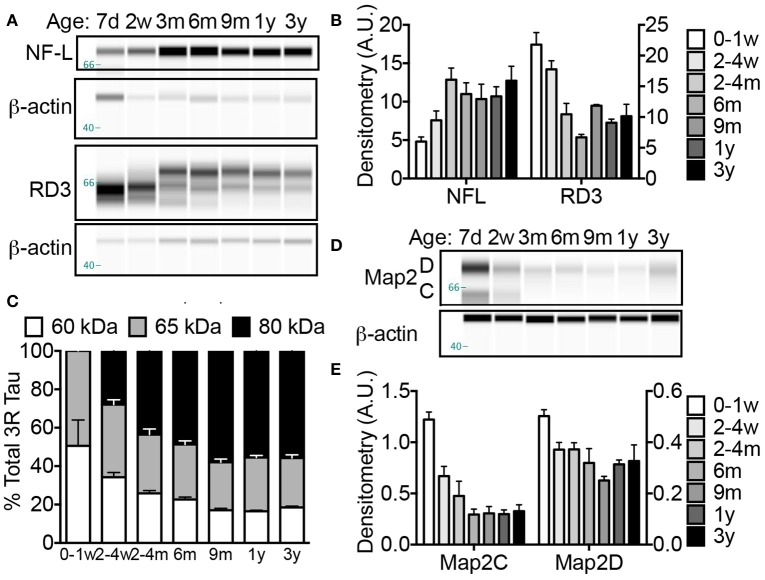Figure 4.
Naked mole-rat brains attain stable adult levels of key neuronal markers at 6 months of age. (A) Artificial capillary electrophoresis (CE) immunoblot reveals that while levels of axonal protein neurofilament light chain (NF-L), increases dramatically during the first 3 months of postnatal development, a simultaneous decrease in axonal three-repeat tau protein occurs. (B) Densitometric normalization to β-actin and statistical analyses indicates that both NF-L and RD3 levels change significantly during the first 3 years of life (ANOVA, p = 0.0002; p < 0.0001, respectively). Significance is reached with both axonal markers between birth and 2–4 months with an increase in NF-L (168%; p = 0.0002) and decrease in RD3 (52%; p < 0.0001). (C) Tau protein isoform distribution also changes with age as indicated by a transition in RD3 tau isoform expression from 1:1 low molecular weight 60:65 kDa during the first week of life to more prevalent high molecular weight tau 80 kDa species accounting for 50–60% of total RD3 protein at ages 6 months and older. (D) CE immunoblots were generated by probing naked mole-rat brain homogenates with an antibody directed against total microtubule associated protein 2 (Map2) dendritic proteins. (E) Analysis of densitometric normalization to β-actin loading control indicates a significant decline in Map2C and D during the first 3 years of life (ANOVA, p < 0.0001, and p = 0.0010, respectively). The expression of Map2C decreases immediately by 2–4 weeks (ANOVA, p = 0.0043) while the decrease in Map2D does not reach significance until 6 months (p = 0.0074). (d, days; w, weeks; m, months; y, years).

